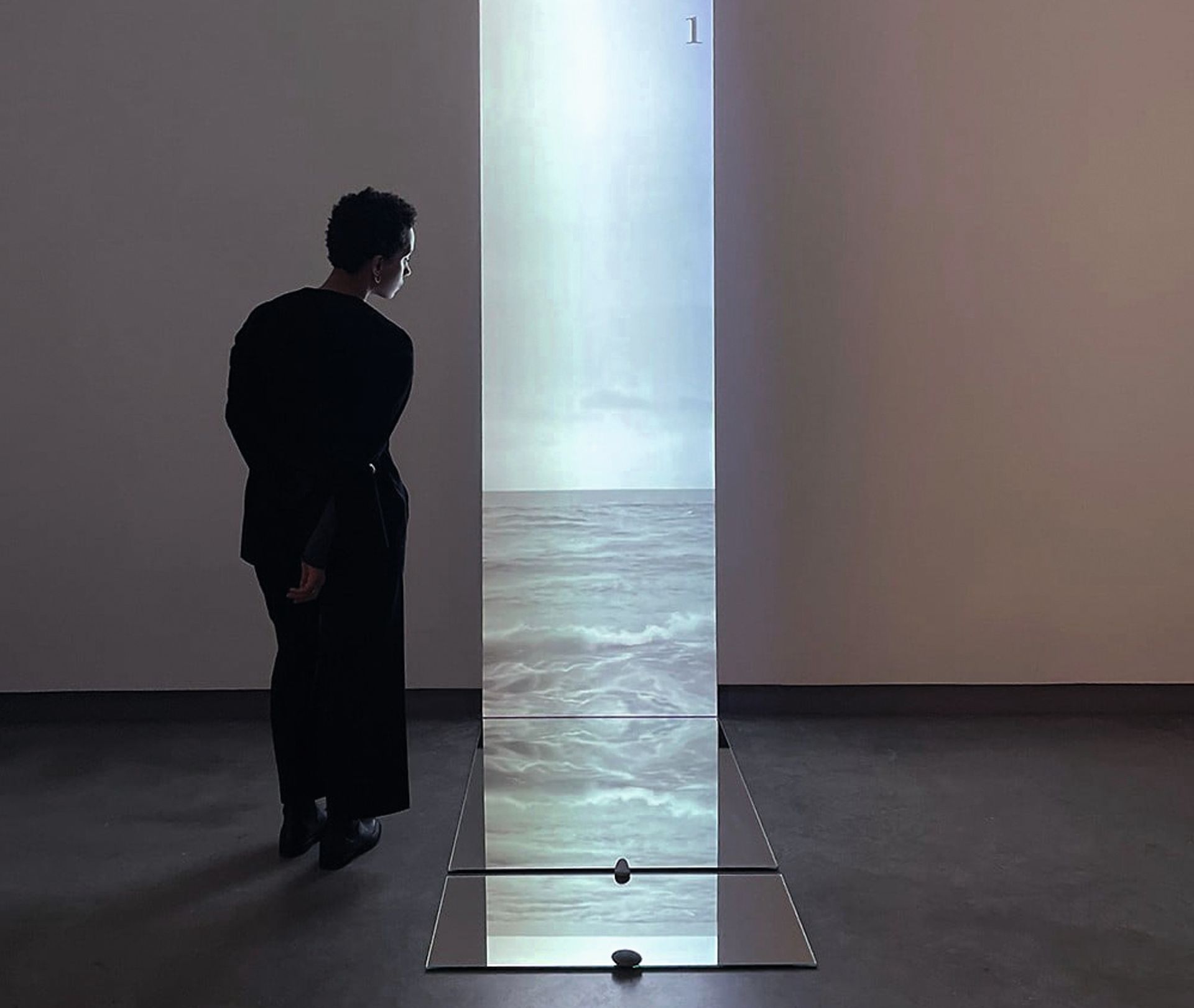A selection of Korea's most exciting contemporary artists have been selected for this year's Korean Artists Today, a long-term project which will see a cohort of artists chosen each year for their potential to make it on the global stage. See the full list here.
Language lies at the heart of Jesse Chun’s work. “Language is an incredibly intricate and powerful thing. It can hold and release so much,” she says. Whether Chun is using moving images, drawing, sculpture, performance or multimedia installation, her central concern is for her work to act as “immersive poetics” and to be felt rather than read. “If you take language apart from all these manmade structures of power and legibility, then what is language?” she asks. “How can I unfix it, pry it open, then see all the layers within it? And from there, can I make abstractions from that?”
Chun was born in Korea but moved to Hong Kong when she was 11; she is now based in Seoul and New York. She has also lived in Canada and feels that this diasporic experience has undoubtedly influenced her linguistic preoccupation. “When I moved to Hong Kong it was still a British colony, so my relationship to language was never neutral—being from these multiple places has made me want to have a more polyphonic perspective,” she says.

Jesse Chun’s 시: sea (2022), a concrete poem Courtesy the artist
Chun has exhibited worldwide, including at the Metropolitan Museum of Art in New York and London’s Whitechapel Gallery. Her first solo survey in Korea was at the 12th Seoul Mediacity Biennale in 2023, where works included score for unlanguaging (2021 onwards). In this ongoing series, graphite, pigments, pins and Roman alphabet stencils are all used to layer, fold and fragment the global lingua franca of English into new abstractions. “I don’t make English but instead map new cosmologies of language,” Chun says, and these “sculptural drawings” come in all shapes and sizes, including being scaled-up as public billboards. Sometimes they are also treated literally as scores to be interpreted by other artists who are invited to “translate” and activate the score in whatever way they choose, often as a performance, with Chun relinquishing any control over how her work is interpreted. “I can’t predict how the performance will unfold until the very day it takes place.”
Recently Chun has reconnected more closely with her traditional Korean roots, especially through the influence of her late grandmother, a Korean folk dancer who later became a Buddhist monk and for a time lived with the family. “She taught me a lot of things, like the Buddhist meditation of writing out texts over and over for hours, which I did with her every day. My schedule was like a monk’s!”
This repetitious spiritual practice is reflected in Chun’s recent series 시: concrete poem, made using her personal reinterpretation of Korean shamanic paper-cutting. She describes it as “my own crazy meditative process”, involving laboriously drawing thousands of lines on the paper which are then intricately hand-cut into an abstract script. “Traditionally, mudang [priestesses] would cut paper during gut [shamanic rites] and use it as a portal to summon spirits,” she says. “I like that this activated paper-cutting acts as a portal to communicate with another world. It opens up the possibilities of language.”
• Jesse Chun has held solo exhibitions at Seoul Museum of History, Commonwealth and Council, Los Angeles, and Yeh Art Gallery at St John’s University, New York. Her work has also been shown at the Whitechapel Gallery, London, and the 12th Seoul Mediacity Biennale. She is currently artist in residence at the National Museum of Modern and Contemporary Art (MMCA) in Seoul



